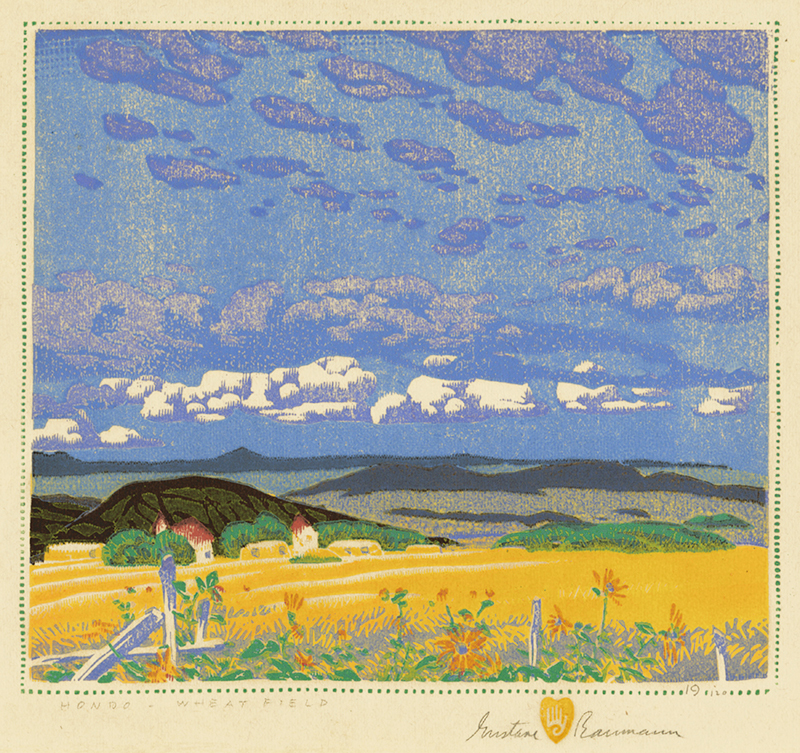
19th, 20th & 21st Century Fine Prints
707-546-7352 · fax 707-546-7924 · web: www.annexgalleries.com · email: artannex@aol.com
Hondo - Wheatfield by Gustave Baumann

Hondo - Wheatfield
Gustave Baumann
Hondo - Wheatfield
Gustave Baumann
1881 - 1971 (biography)Hondo - Wheatfield is a color woodcut from 1931 by American master printmaker Gustave Baumann (1881-1971). Baumann began printing his blocks in 1931 but never completed this edition or issued a later edition. The more common title for this woodcut is Hondo. This impression is pencil signed, titled, and editioned 19-120. It was printed by the artist on cream Zanders wove with the Hand-in-Heart watermark. The image measures 9-3/8 x 11 inches.
The reference for this work is Chamberlain 139. For an explanation of the printing record for this color woodcut and the number of blocks use, we refer you to page 378 of In A Modern Rendering The Color Woodcuts of Gustave Baumann: A Catalogue Raisonné.
A classic, cloud-filled New Mexico sky caps this weeping landscape, encompassing rail fences, golden grasses, adobes, and distant hills. There are a number of places and communities in New Mexico that incorporate the word Hondo into their proper names, but the specific site remains unidentified.
Gustave Baumann was born in Magdeburg, Germany on 27 June 1881. Ten years later his family immigrated to the US, settling in Chicago. In 1896, Baumann began working in the commercial art field while saving money to study in Germany. After returning from Munich in December 1905 where he studied at the Kunstgewerbeschule, Baumann worked again in commercial art to support his family. In 1909, he discovered Brown County, Indiana where life was inexpensive and he could stay for three months. He produced a series of small format color woodcuts featuring the people and places of Brown County and then produced five large format color woodcuts. His woodcuts were accepted by the committee for the 1915 Panama Pacific International Exposition and he won a gold medal in 1916.
Baumann headed east to Wyoming, New York in 1917 and taught at a summer school. From there he headed to Provincetown and New York City before returning to set up his studio in Wyoming. The southwest beckoned and he headed west in May 1918, stopping in Taos for the summer and fall. His funds were low and he needed to head back to Chicago but first stopped at the new art museum in Santa Fe to see an exhibition of his woodcuts. The rest, they say, is history.
